Waterloo and Great Crosby Tramways
History
Waterloo and Great Crosby Tramways were jointly owned by the Urban District Councils of Waterloo-with-Seaforth and Great Crosby. The system was essentially a single line, 2.66 miles long (1.66 miles in Waterloo and 1.00 miles in Great Crosby) from the Liverpool Overhead Railway station at Seaforth Sands, running northeastwards along Crosby Road South and Liverpool Rd, through Waterloo to a terminus in Cooks Rd, Great Crosby. Standard-gauge, overhead electric services commenced on the 19th June 1900 — between Seaforth and Five lamps — the full line opening some time in late September (the precise date is unknown).
The tramway was operated by the Liverpool Overhead Railway Company, the sole instance in the British Isles of a railway company operating a municipal tramway. Doubtless the councils had originally harboured hopes of leasing the system to Liverpool Corporation Tramways, but the latter had little enthusiasm for operating a suburban tramway separated from its home territory by the tramways of Bootle Corporation; the relationship between the latter and Liverpool Corporation varied between strained and openly hostile, even though the LCT operated Bootle's electric tramways for their entire lifespan. The LCT-operated tramway tracks in Seaforth Sands (in Bootle), which were only a matter of yards from those of the W&GCT, were therefore destined never to be connected.
Financial details of the tramway are sparse, but as the LORCo sought an extension to the lease in 1919, it was presumably a profitable enterprise. The councils however refused, which inevitably led to the LORCo reining back on tramcar modernisation, given that its lease was set to expire in 1925.
The councils meanwhile approached Liverpool Corporation with a view to selling the system. Whilst a full scheme of road widening and rebuilding as a modern double track tramway was agreed, the entire scheme collapsed over the relatively minor issue of fare structures. As a result, the tramway closed on the 31st December 1925, the buses of Crosby Motor Services Ltd taking over the next day.
Uniforms
Photographs of this small and somewhat unusual system are relatively rare, so it is not possible to state with anything approaching certainty how the uniforms changed over its 25-year life span (from 1900 through to closure in 1925). A few early photographs have however survived, which at least reveal the headgear and cap badges worn in that era.
These photos suggest that staff wore double-breasted jackets with high, fold-over collars, though it is possible, given the poor quality of the photos, that they are actually overcoats rather than tunics. Caps were initially in a kepi style with a glossy peak and light-coloured piping; they carried a large oval cap badge comprising the title of the operating company — The Liverpool Overhead Railway Co — around the company monogram 'LORC'. The badge was probably nickel, as were the buttons (see link).
In subsequent years — and certainly by the late Edwardian era — uniform jackets were single-breasted with five buttons and two breast pockets (with button closures); those for conductors had lapels, whereas those for motormen had upright collars; neither appears to have carried any insignia. Caps were also changed to a more contemporary military style with a tensioned crown (top), probably around 1902; they continued to carry the standard 'LORCo' cap badge.
Women were probably employed during the Great War to replace male staff lost to the armed services, however, photographic evidence is currently lacking, as it is for inspectors.
Further reading
For a short history of the system, see: 'Liverpool Transport Volume 2 1900-1930' by J B Horne and T B Maund; Transport Publishing Company (1982).
Images
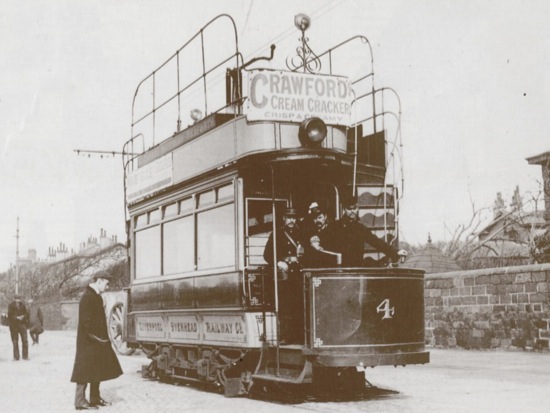
Great Crosby Tramways Car No 4 — photo undated, but probably taken in 1900 or 1901. The tramcar is clearly marked with the operating company's name — Liverpool Overhead Railway Co — rather than the municipal owners (Waterloo-with-Seaforth and Great Crosby UDCs). Photo courtesy of the Tramways and Light Railway Society, with thanks to David Voice.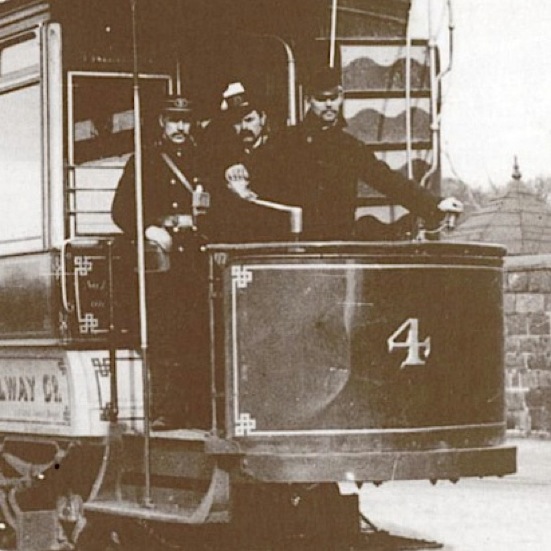
A blow-up of the above photo showing the crew. The individuals behind the driver are wearing piped kepi-style caps with a large oval badge, almost certainly that depicted below.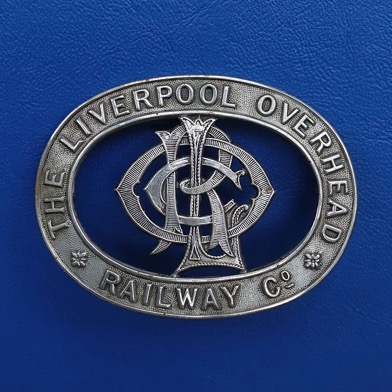
Great Crosby Tramways cap badge — nickel. Photo courtesy of the Alan Robson Collection.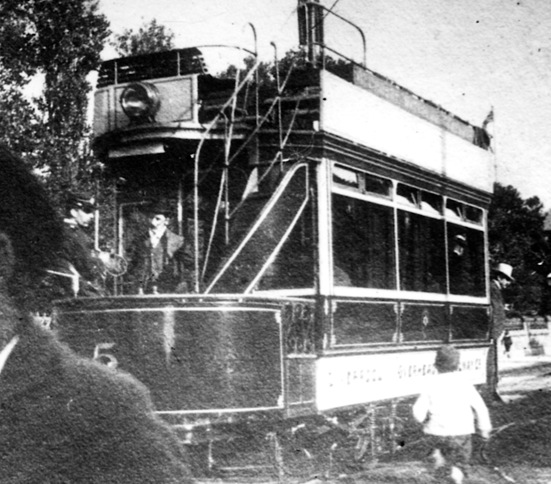
An unusual side profile of a motorman, but one that clearly shows the kepi-style cap and piping — photo undated, but again very probably taken in the first year of operation judging by the excellent condition of the vehicle. Photo courtesy of the Tramways and Light Railway Society, with thanks to David Voice.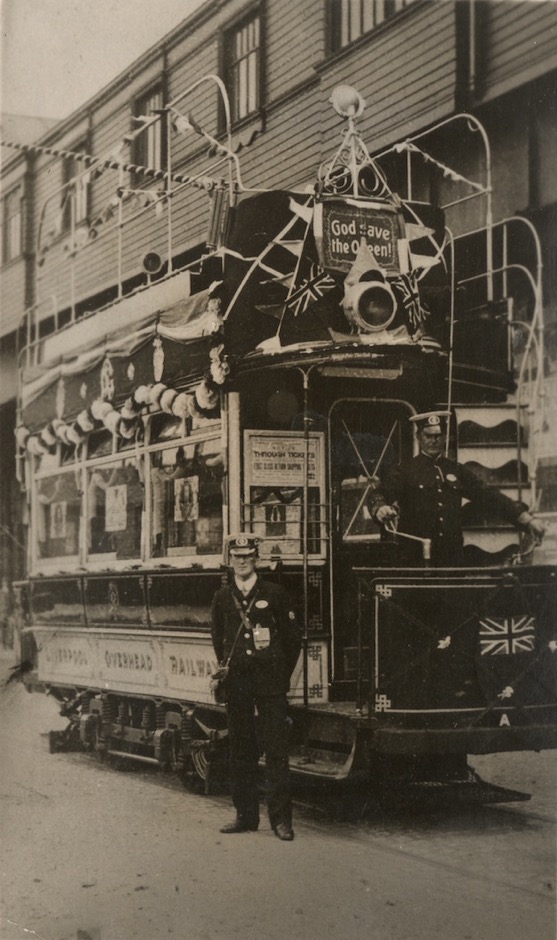
A conductor and a motorman with one of the direct staircase 'Preston' cars at the Seaforth Sands terminus beneath the Liverpool Overhead Railway — photo purportedly taken on the occasion of the Coronation of 1902. Author's Collection.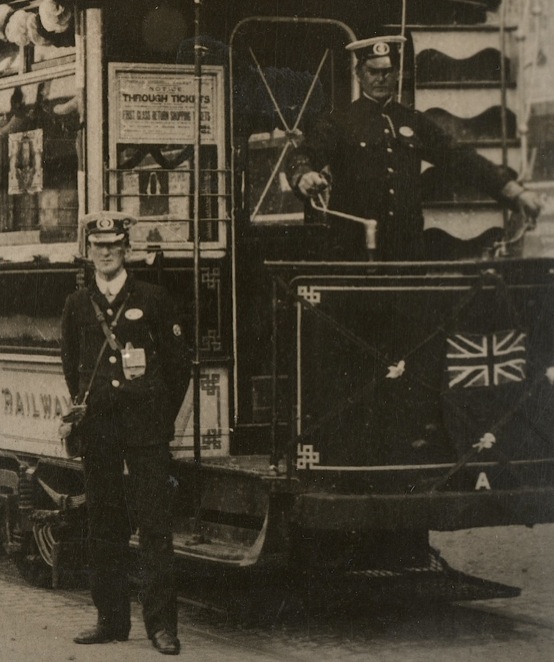
A blow-up of the above photo showing the conductor and motorman, both of whom are wearing single-breasted tunics, the conductor's with lapels, whereas the motorman's has upright collars. By this time (1902), the earlier kepi-style caps had clearly been replaced by military-style caps with tensioned crowns (tops). Both men are also wearing oval badges on their left breasts; these are not seen in other photos, so are presumably something to do with the coronation. It is possible that the conductor has an armband, the significance of which is unclear. Author's Collection.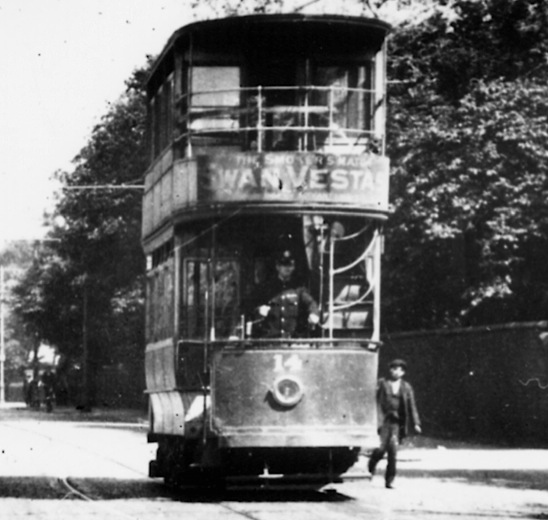
A motorman at the controls of Tramcar No 14, one of the few top-covered vehicles in the fleet — photo undated, but probably taken in the early 1920s (the motorman may be wearing a medal ribbon). Photo courtesy of the Tramways and Light Railway Society, with thanks to David Voice.